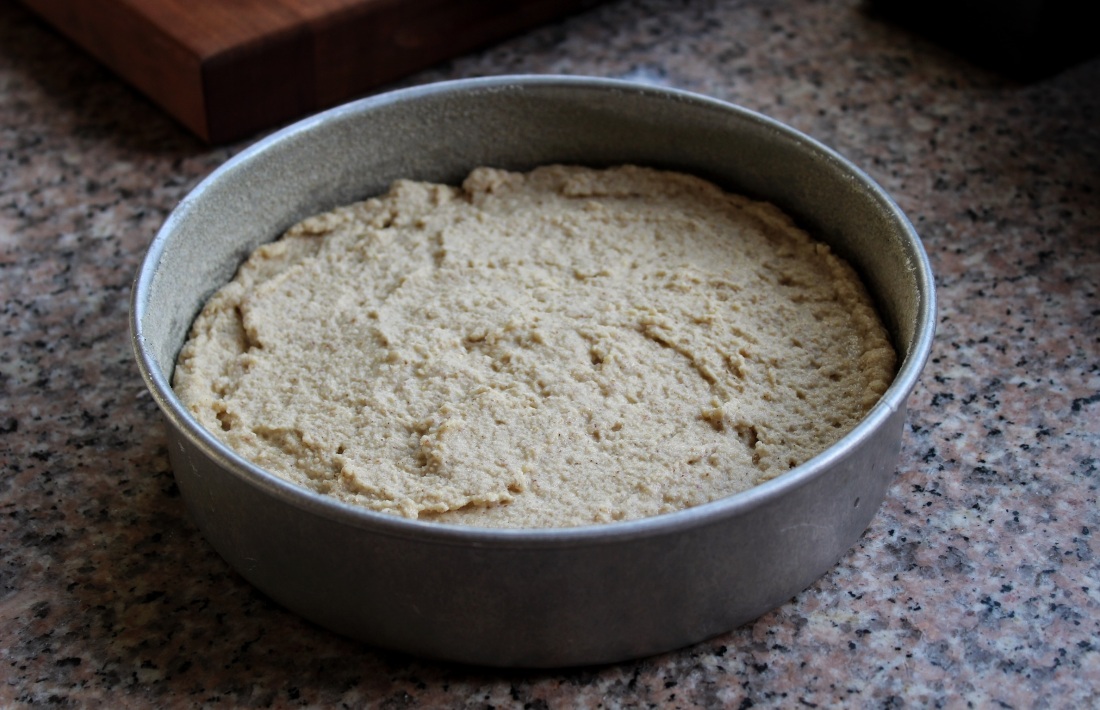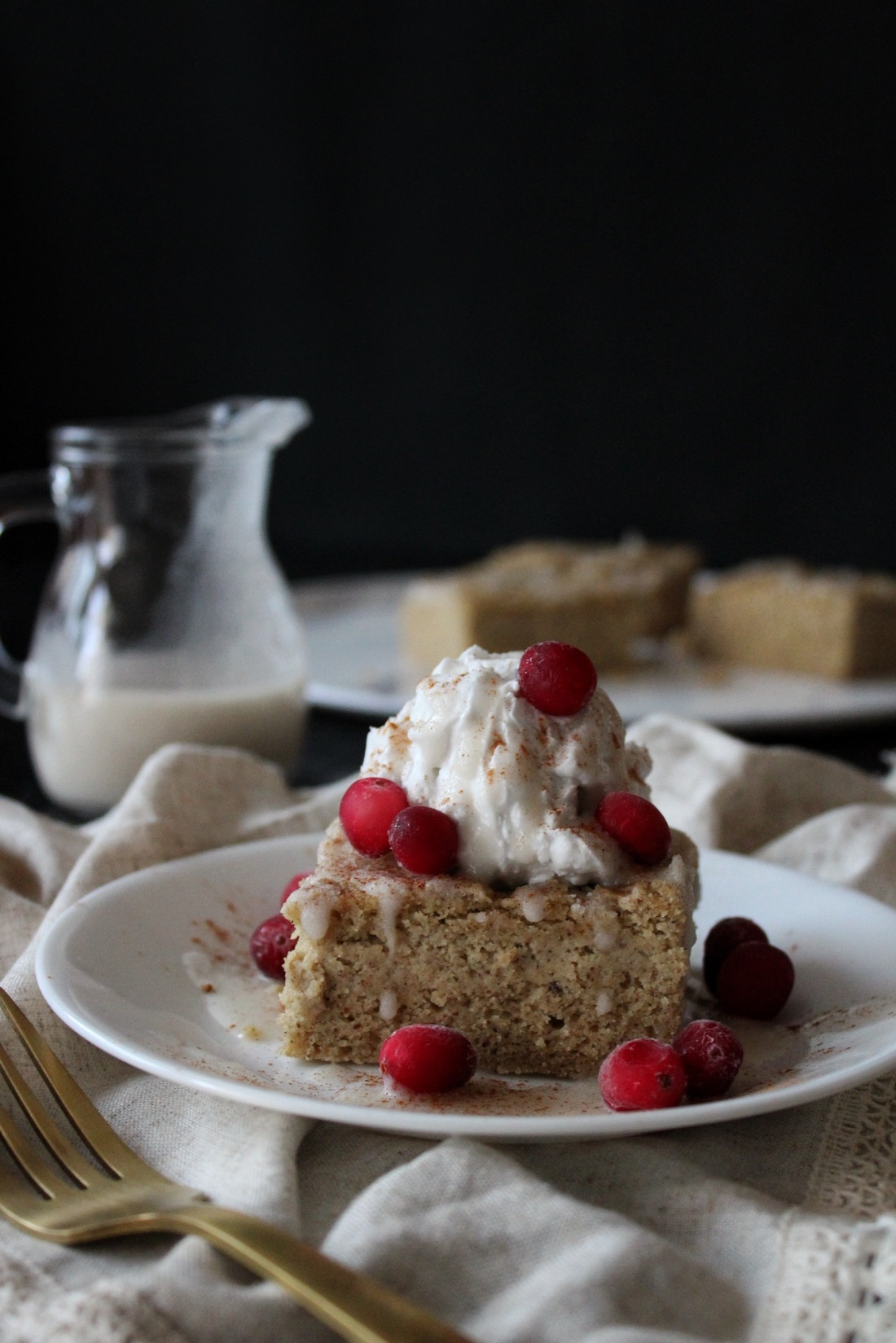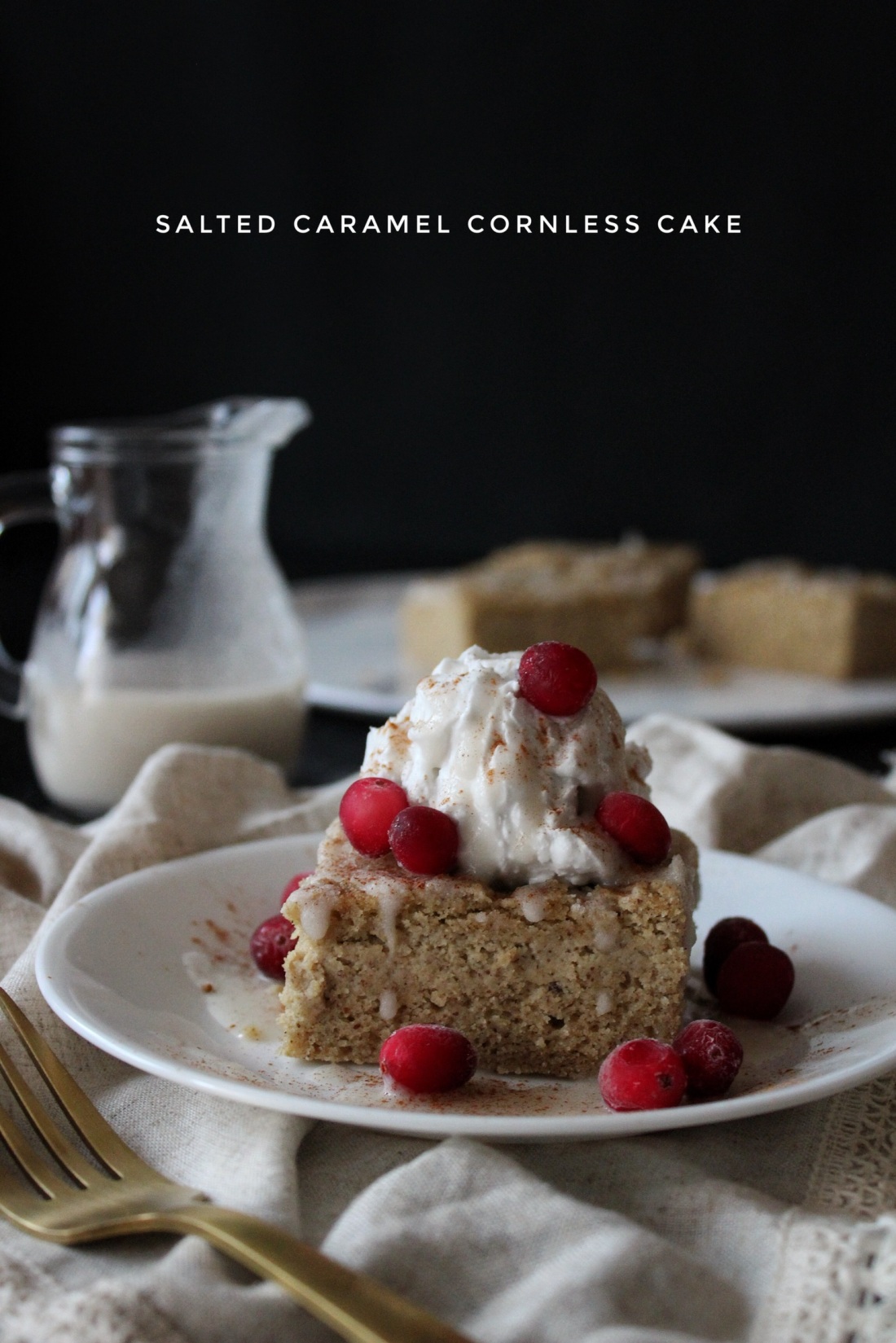
After our Cornless Bread recipe, I started to realize that maybe the world of baking isn’t impossible to dance around in, even with a strict sugar-free, vegan, and lectin-limited diet.
It took a while, but through the month of November we discovered that the mixture of cassava & sorghum flour – in different ratios – possesses the ability to create a desired texture for a variety of baked goods. While many flour substitutes claim to be usable “1:1” with all-purpose flour, I’ve found that to be BS. The only way to accomplish results similar to that of wheat flour is to blend different gluten-free flours together. As you can tell, the two flours we reach for most often are cassava and sorghum, albeit here’s a list of flours that are acceptable under a lectin-limited diet, just in case you’re curious:
- Blanched almond flour
- Coconut flour
- Green banana flour
- Sorghum flour
- White rice flour*
- Cassava flour
- Tapioca starch
- Arrowroot starch
- Hazelnut flour
There are a few other flours out there that are “lectin-friendly,” but – for the sake of accessibility – these are the only ones I think are worth mentioning.
Now, you’ll notice an asterisk next to white rice flour, which I put there because it’s not a flour that Dr. Gundry – author of The Plant Paradox – would approve of, given that it contains a higher amount of simple carbohydrates than resistant starches. However, white rice flour doesn’t contain any lectins, as they’re tossed out with the husk and bran of the grain, so while it’s not a Plant Paradox approved flour, it’s one that I could see being of versatile use in the kitchen and of little health consequences when used in moderation.


Because I’m most familiar with cassava and sorghum flour, I’ve taken notice to the fact that cassava lends a sticky, dense, moist, and gummy effect to most baked goods, whereas sorghum lends a light, crumbly, delicate, and gritty effect to most baked goods.
For a gritty, slightly crumbly product like Cornbread, we use more sorghum flour than cassava flour, but for a dough that needs to be durable and homogenous, such as pie crust, we use a greater amount of cassava than sorghum. Once you start to get a feel for these two flours, I’m convinced that the options are nearly limitless – watch out cakes, we’re comin’ for you next!

The only difference between the batter of this cornless cake from our cornless bread recipe is that in this one we added an extra 2 oz of light coconut milk and sifted the dry ingredients, the combination of which creates a lighter, cake-like texture. Oh, plus we added a teaspoon of vanilla extract, because vanilla.
Before I let you guys go, we need to talk about the caramel here. Yes, it’s sweet, salty, and delicious, but uhhh… it’s not the same as normal caramel. For one, because eryrithritol doesn’t contain any glucose, sucrose, or fructose, it does’t caramelize like sugar does, which is where caramel gets it caramell-y color & flavor; no matter how long you cook erythritol, it remains clear.

Secondly, as far as texture goes, it does thicken up when cooled and thin up when heated like normal caramel, but it isn’t as creamy as sugar based caramel sauces. Aaanndd, it’s a little bit gritty (just a little bit). I actually had better results while testing out xylitol instead of erythritol, but, being that erythritol is all that I currently have on hand, I’ma make due with what I got.
I tell you guys this to say: hey, this caramel sauce ain’t perfect! But, if you do decide to test it out, play around with it in your own kitchen, or have any ideas as to what could make this caramel smooth & brown, please let us know in the comments.
“Caramel, you may be able to stump me once – or twice or fifty times – but we will meet again! And I will conquer your complex conundrum with cunning culinary science and consistent cooking!”

Alas, our salted caramel cornless cake is a comforting, sweet & salty dessert perfect for the holiday season. For an all around sensational treat, top with coconut whipped cream or sugar-free vanilla ice cream (SoDelicious got the hook up) and a sprinkle of cinnamon!
If you like what your taste buds are tellin’ ya, leave behind a nice rating, share your thoughts with us in the comments, or show us your creations by tagging @noeggsorham on Instagram.
What recipes would you guys like to see in December? If there’s an entree, drink, dessert, or side-dish that you’ve always wanted to receive vegan, sugar-free, and lectin-limited treatment, let us know through this page!
Cheers,
Ryan & Kim

Salted Caramel Cornless Cake
Light & fluffy vanilla 'cornbread' is coated in a sweet & salty glaze and drizzled with sugar-free caramel sauce, to complete an indulgent desert perfect for the holidays.
Ingredients
Cornless Cake
- 175 g (1 1/4 c) sorghum flour (plus more for pan)
- 64 g (1/2 c) cassava flour
- 1 tsp baking powder
- 1/2 tsp baking soda
- 1/2 tsp sea salt*
- 10 oz (1 1/4 c) light coconut milk*
- 2 flax eggs (2 tbsp flax meal + 5 tbsp water)
- 56 g (1/4 c) melted buttery coconut oil or virgin coconut oil (plus more for pan)
- 48 g (1/4 c) xylitol or erythritol
- 1 tsp apple cider vinegar
- 1 tsp vanilla extract
Glaze
- 24 g (2 tbsp) erythritol or xylitol
- 7 g (1/2 tbsp) coconut oil
- 1/8 tsp salt
Salted Caramel Sauce
- 4 oz (1/2 c) erythritol
- 4 oz heavy coconut cream
- 2 oz water
- 1/2 tsp salt
- 1/2 tsp vanilla extract
Serving (optional)
- Coconut whipped cream
- Sugar-free ice cream
- Sprinkle of cinnamon
Directions
- Pre-heat oven to 400° F and prepare a 9 inch cake pan by coating the bottom and sides with coconut oil – works best when coconut oil is solid – and dusting it with 2 tbsp of sorghum flour. Once completely coated, shake out any excess flour. Set aside.
- To prepare glaze, in a small sauce pot over medium-high heat, combine erythritol, coconut oil, and salt. Stir often until all of the crystals have dissolved; about 5 minutes. Turn off heat & allow to cool while preparing batter. It will likely crystallize – this is to be expected.
- Sift together sorghum flour, cassava flour, baking powder, and baking soda into a large mixing bowl. Sprinkle salt on top as it doesn’t sift very well.
- In a medium mixing bowl, thoroughly whisk together flax & water and let it sit for at least one minute. To that, whisk in the melted butter/coconut oil until homogenous. Then, whisk in coconut milk, apple cider vinegar, and vanilla until combined.
- Pour the wet ingredients on top of the dry ingredients and stir with a wooden spoon until no dry spots remain; about 15 seconds.
- Transfer batter to prepped cake pan and smooth out the top out with your spoon. Drizzle glaze on top of the batter and set in oven for 19-23 minutes or until the sides pull away from the pan and a toothpick inserted into the middle comes out clean.
- Remove from oven and cool in pan for 15 minutes. Then, carefully remove from pan onto a plate or cooling rack to cool the rest of the way.
- Note: The best way to remove the bread is to a run a knife around the sides to ensure it’s not sticking, place a plate over the top, and then quickly invert the pan. To get your cornless cake right side up, put a plate ontop of that plate and flip it once again.
- While the cake bakes, prepare salted caramel sauce by combining 4 oz erythritol, 2 oz water, and 1/4 tsp salt in a small sauce pot. Without stirring, bring to a simmer over medium heat. Cook for 6 minutes, undisturbed. Then, reduce heat to medium-low, add in heavy coconut cream, and stir constantly with a heat-resistant spatula or wooden spoon for three minutes.
- Transfer caramel to a heat-resistant container, stir in vanilla, and let cool for at least 30 minutes and up to an hour; the longer it stays out, the stiffer it becomes.
- Cut cornless cake into desired sized pieces, top with coconut whipped cream or vanilla ice cream, drizzle with salted caramel sauce, and sprinkle with cinnamon.
- Store any leftover cake in an airtight container for up to three days. Store leftover caramel sauce in fridge for up to a week – to loosen it up, place in a small pot over medium heat until it thins out to desired consistency.
*If you’re using fine sea salt or table salt, measure out 2 g by weight or reduce the amount to 1/4 tsp.
*You can make your own light coconut milk by combining 4 oz full-fat coconut milk with 6 oz water.

Ryan
I’m going through old recipes of yours, looking for desserts for our holiday dessert party. I wonder if you’d tried pulverizing the erythritol in a blender like you would sugar, to make powdered sugar.
Maybe that would cure the graininess.
LikeLike
Hey Cara,
That may help the grittiness! Since the time this recipe was posted, I’ve learned that erythritol doesn’t caramelize, which impart of the reason the sauce didn’t work out. And I’ve also discovered that the addition of a liquid sweetener – usually agave or corn syrup – in a caramel sauce helps prevent crystallization from forming. For sugar-free, xylitol honey may help the situation, but it won’t allow the erythritol to caramelize, unless Swerve is being used in its place!
Thanks
Ryan
LikeLike
Looks amazing – Yum.
LikeLike